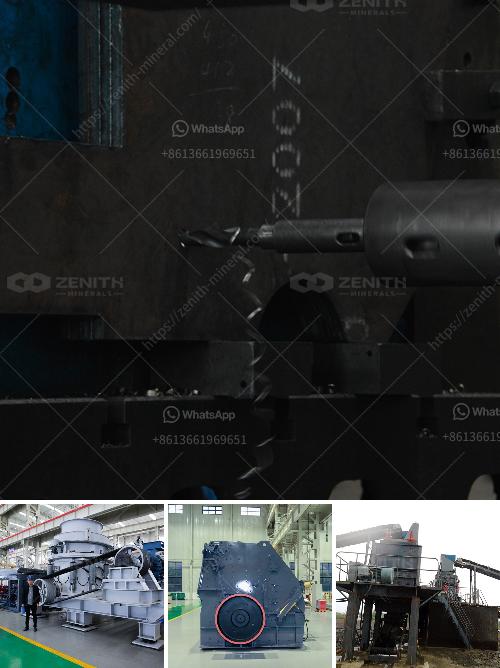Building a granite crushing plant involves several crucial steps, from initial planning and design to the final assembly and operation. Here’s a comprehensive guide to help you through the process:
-
Conduct a Feasibility Study:
- Evaluate the market demand for crushed granite.
- Assess the availability of raw materials.
- Analyze the site location, including proximity to raw material sources and potential customers.
- Study environmental, legal, and regulatory requirements.
-
Design the Plant Layout:
- Determine the plant capacity based on market analysis.
- Design the layout to streamline the operation: material flow, equipment placement, storage areas, and transport routes.
- Consider access to utilities (water, electricity).
-
Select and Procure Equipment:
- Primary Crusher: Typically a jaw crusher for initial breaking of large granite rocks.
- Secondary Crusher: Cone crusher or impact crusher for further reduction.
- Screening Machine: To classify crushed granite into various sizes.
- Conveyors: For material handling between different stages.
- Vibrating Feeders: To regulate the feed of materials.
- Dust Control Systems: To minimize pollution.
-
Site Preparation:
- Clear the site of any obstructions.
- Prepare the foundation for the plant structures and equipment.
- Ensure proper drainage and erosion control measures.
-
Construction and Installation:
- Construct necessary buildings and infrastructure (offices, workshops, storage areas).
- Install crushers, screens, conveyors, and feeders.
- Set up dust control systems, water supply, and power connections.
-
Commissioning and Testing:
- Perform initial testing of individual equipment units.
- Conduct full-system trials to ensure all components operate smoothly together.
- Adjust and fine-tune equipment settings for optimal performance.
-
Operational Planning:
- Develop operational procedures and safety protocols.
- Train staff in equipment operation, maintenance, and safety practices.
- Implement a maintenance schedule to ensure long-term operational efficiency.
-
Environmental and Regulatory Compliance:
- Set up measures for dust control, noise reduction, and waste management.
- Obtain necessary permits and comply with local regulations.
-
Monitoring and Optimization:
- Regularly monitor plant performance.
- Analyze production data and identify opportunities for efficiency improvements.
- Keep up with technological advances to upgrade and optimize plant operation.
-
Marketing and Sales:
- Develop a marketing strategy for your products.
- Build relationships with potential buyers (construction companies, builders, etc.).
By following these steps and continuously improving operations, you can effectively build and run a granite crushing plant that meets market demands and operates efficiently.

